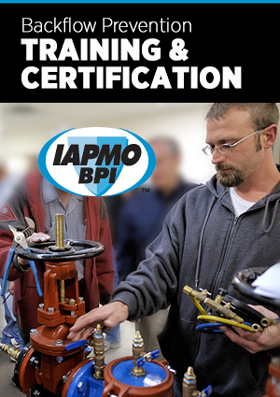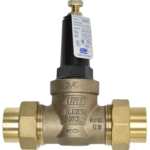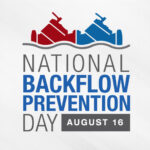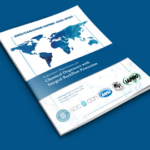During the past week I attended a certification class as a student. While I teach cross-connection control classes all year long and speak at or attend seminars on a regular basis, this was the first time in a while I was simply a student. The class was related to water quality and water safety, two topics front and foremost to anyone working in the cross-connection industry. The class was training to become ASSE 12080 certified. The ASSE 12080 Professional Qualification Standard for Legionella Water Safety and Management Personnel is a new certification program, approved in April 2020 to deal with an existing need that in reality dates back to the mid-1970’s. This certification sets a minimum standard for individuals involved in creating a risk assessment along with a water management and sampling plan. It fits perfectly into the ASSE wheelhouse, after all, the ASSE motto is “Prevention Rather Than Cure.”
Preventing problems before they occur is something cross-connection programs and the water management and safety programs have in common. Each takes a very pro-active approach to preventing, rather than fixing problems. Each program requires an investment up front to prevent a far larger cost down the road, after problems are allowed to occur. It also requires ongoing maintenance, testing and vigilance in making sure the necessary protections stay in place. Each is also something people over time may start to take for granted or may decide are unnecessary. The problem with both these programs is if they are done well, problems do not occur and because of the cost and time required to keep them in place, administrators or building owners may decide the programs are not needed or worth the investment. I always point to the example of a traffic signal. If a busy intersection has multiple accidents a traffic signal or traffic light is installed. As a result of the installation accidents are eliminated or greatly reduced at the intersection. Does that mean that because we have less accidents the traffic signal is no longer needed? No person in their right mind would ask for the traffic signal to be removed, so why at times do people look to eliminate or curtail other protection measures that are in place to protect the public health.
It became clear during the class that we have not been as aggressive as we should in working to prevent legionella growth in the past and even now the problem is not receiving the attention it should. It makes me think of the discussion I still have concerning backflow prevention with far too many people. The question of when did backflow become a problem in water systems is an interesting one. I think we would need to go back to the construction of the Roman Aqueducts to look at when the first instance occurred. In truth as long as man has been putting water in pipes, backflow has been an issue. People getting sick or dying should not be required before we act. We do not need to wait for what are sometimes referred to as “Tombstone Regulations”, the passing of regulations or laws to correct a foreseeable issue after a tragedy results in death.
In an ironic twist the evening after I completed the class, I looked at my newsfeed on my phone and saw a piece from CNN. It was titled: “America’s newest water safety challenge is something you’ve never heard of.” It can be found at: https://www.cnn.com. It is an interesting read, talking about biofilm in water piping and its relationship to legionella and other bacteria growth in systems. Those of us in the industry are well aware of biofilm and legionella and have been for many years. Perhaps situations like Flint, Michigan will finally make the general public look at water safety and water quality issues a little closer.
I will say this, I have always made it clear to everyone who would listen that being in our industry requires lifelong learning and education. The only thing constant is that change, and challenges are there and will be there each and every day. This training opened my eyes to the need for this training and certification and for water management and safety teams in hospitals and other medical facilities, in nursing homes, in school districts, in factory complexes, and in any large commercial facility. I think it is also a field that companies dealing with water safety, cross-connection control, plumbing service and installation should take a serious look at becoming involved in at some level. An introduction to these certifications and to the topic of legionella issue should be part of any quality plumbing apprenticeship program. If you are interested in the training, you can register for a class here.
Our industry is a pro-active one, taking steps to prevent problems instead of cleaning up after situations occur that should have been prevented. Let us expand our outlook and do all we can to protect the health of the nation and of the world. Owen Arthur once said: “For he who has health has hope; and he who has hope, has everything.” Mr. Arthur knew what he was speaking about, health is hope and hope is life. In this crazy COVID time that has been made clear to all of us.
As we enter 2021 please stay safe and enjoy the holiday season. There is light at the end of this long tunnel.
About the Author |
|
 |
Sean is a 40 year member of the United Association Local 524 Scranton Pa. He has worked in all phases of the plumbing and mechanical industry and is a licensed master plumber. Sean is a Past President of the American Society of Sanitary Engineering. Sean is also the member of the ASSE Cross-Connection Control, Technical Committee. Sean is employed by IAPMO as the Vice President of Operations for the IAPMO Backflow Prevention Institute. |






 29 Dec 2020
29 Dec 2020
 Posted by Sean Cleary
Posted by Sean Cleary 














1 Comment
Thanks Sean, Blessed New Year to you & yours. twisted Tim (FiP)